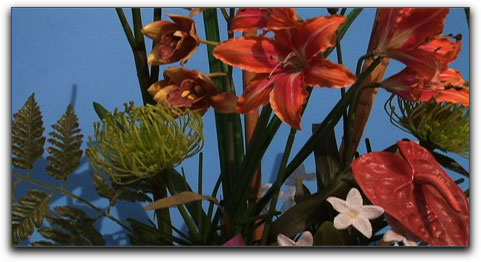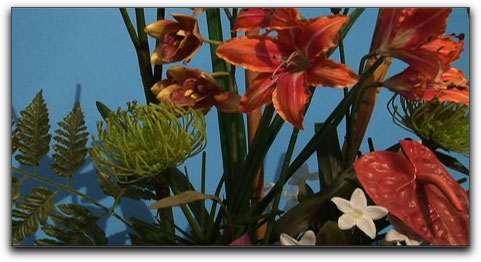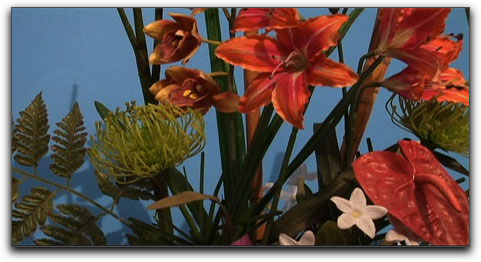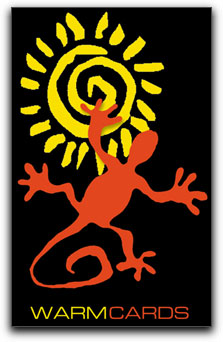
February 13, 2006
www.warmcards.com
$65.00
Review by Bob Gladden and Steve Douglas
Anyone who uses a digital camera, being it a still camera or a video camcorder will want to set his/her white balance. Often much time is spent setting up a shot, trying to achieve that "special signature look" that is either characteristic of our style of shooting or desired by the client. Sometimes we use filters, special lights, and mattes or a combination of these to try and get an image with a special feel. One thing that will truly affect every shot is the setting of the white balance.
Light changes frequently; from bright sun to shade, our eyes adjust automatically, but the digital cameras and camcorders that we use, whether they have CCD's or CMOS chips in them, don't make these adjustments quite so efficaciously. They need a reference point. Thus they use a white balance setting to achieve this. Almost all digital camcorders have Automatic White Balance (AWB) and most have a Manual White Balance setting as well.
In Automatic White Balance mode your camera looks at the overall image and calculates the best white balance setting. While the automatic white balance mode often works pretty well, it can make mistakes. These errors may sometimes be repaired during color correction in post but it is best to avoid the problem in the first place. "White color" is a combination of all colors put together. White balance needs to be changed manually to obtain optimum color and results.
To find out how well your camera works in AWB mode, set your camera to its AWB setting and take some photos/video of the same subject under different lighting conditions. Study your results. Compare them to the same shots where you have manually white balanced before taking the shot. If your results using the AWB are within a range you feel comfortable with, than use the AWB for that situation. However, I am confident that you will see a marked improvement in the color saturation and hue in clips shot with a manual white balance setting. White balance may be the key to every shot, and having a consistent white balance is the key to bringing a consistent look to your sequence or film. Relying on the "auto white balance" in every situation, and in changing conditions may be a mistake. The auto white balance in the camera is a default setting and does not take into account the different lighting conditions - outdoors to indoors, bright sun to shade, lighting from different angles and from a variety of light sources such as fluorescent, tungsten and a host of other types. While it may work just fine in certain circumstances, Auto white balance has a tendency to wash out and remove depth from the colors. Setting the white balance manually, and setting it consistently tells the camcorder how to set other colors based on that WHITE reference. Resetting your white balance in changing conditions and locations with the same white reference allows you keep the same desired appearance throughout your production.
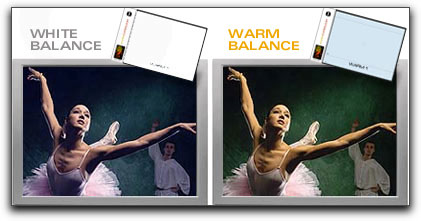
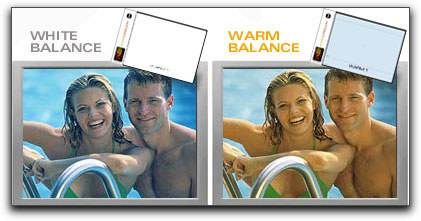
Most cameramen love the warm, beautiful images, which film gives to a production. Video is not film. Digital video cameras provide images that seem to be somewhat harsher and cooler than what our eyes perceive. To get those colors back, we trick the camcorder into accepting a white balance that provides for better coloration. Using a white card is a common way to set your white balance. But is your white balance set the same every time you set it? If you use the same card each time, than yes, your white balance will be consistent. But if you don't than your white balance will vary with the different white cards/papers (shades of white), or whatever it is that you may be using. This in turn will affect the coloration of your images. The standard white of a white balance card should be 100 IRE. This is the standard used in the photographic/film/video industry for white.
Warm Cards are an easy way to provide a warming, more natural look to your productions. The beautifully crafted cards come packaged in a sturdy leatherette zippered pouch for protection and carrying, and include 3 full-size 6" X 10" cards of different grades or strengths and 3 pocket size 3"X4" mini-cards in matching grades. Each card, additionally, has markings for use with both 16X9 and 4X3 aspect ratios. All the cards are waterproof, sturdy and held up very well in the field. In the case of this review that meant underwater where all kinds of salt and other elements could have destroyed a card of lesser quality manufacturing. Each Warm card has a nicely matted finish to avoid unwanted reflections while white balancing and is grommeted for easy organization and carrying.
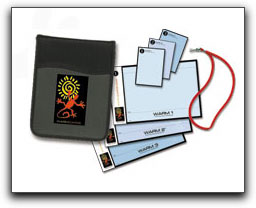
The Warm Cards, in their "Standard Pack" come in three different levels of light blue. (Warm 1, Warm 2, Warm 3.) Pure white light (sunlight, 6000K°) gives everything a bluish cast. That is why there are different levels of Warm Cards. Depending on the conditions you are shooting in and the look you are trying to achieve, one of these cards will provide you with what you want. Just imagine that you are shooting an interview on a tropical island. It is a beautiful, cloudless day, the sun shining bright and harsh overhead. In this case you may want to use a Warm #3 card to set your white balance with. This will counter the bright harshness, providing more natural looking skin tones to your subject.

There is also an optional "Plus Pack" that comes with two other cards, (Warm 1/2 and Minus Green). These cards are of the same high quality as the others but add a greater arsenal to your white balancing abilities. The Warm minus card is one half the level of the Warm 1 card; the Minus Green card is for shooting under fluorescent lighting, eliminating the greenish cast that cameras often capture without it.
